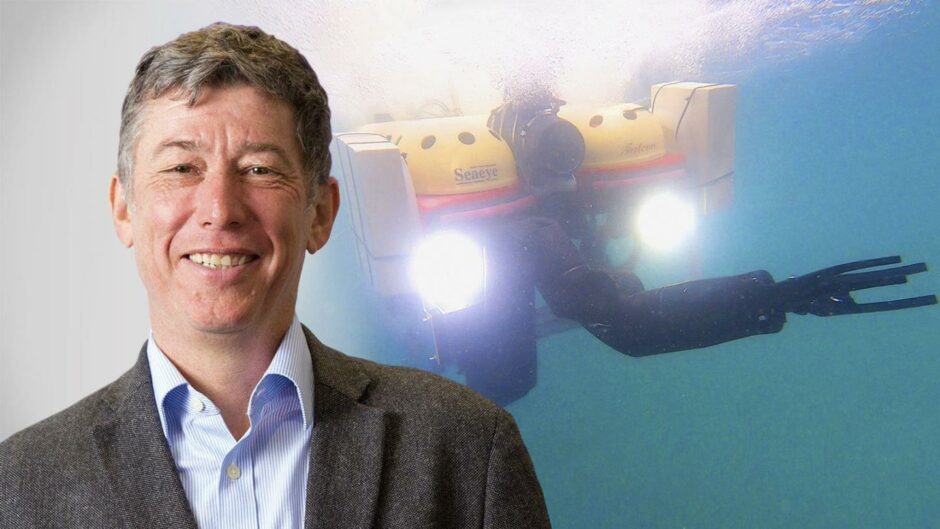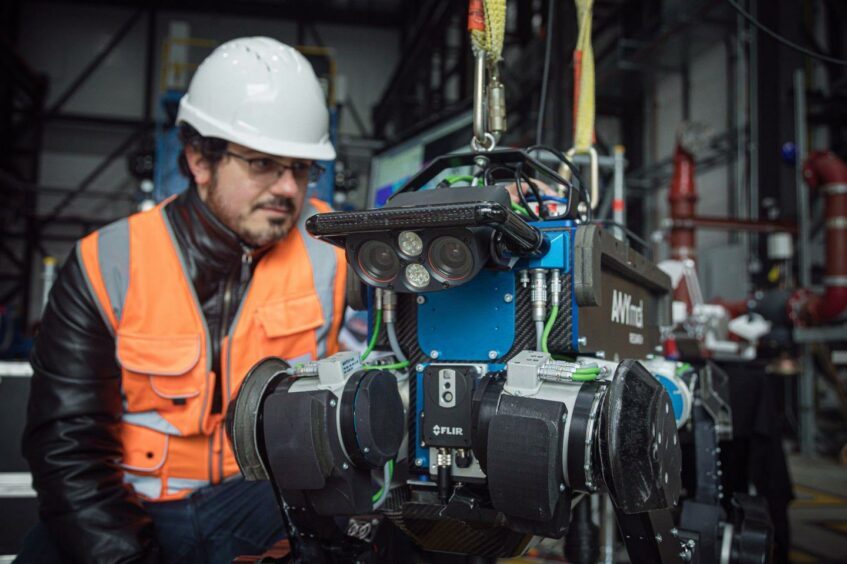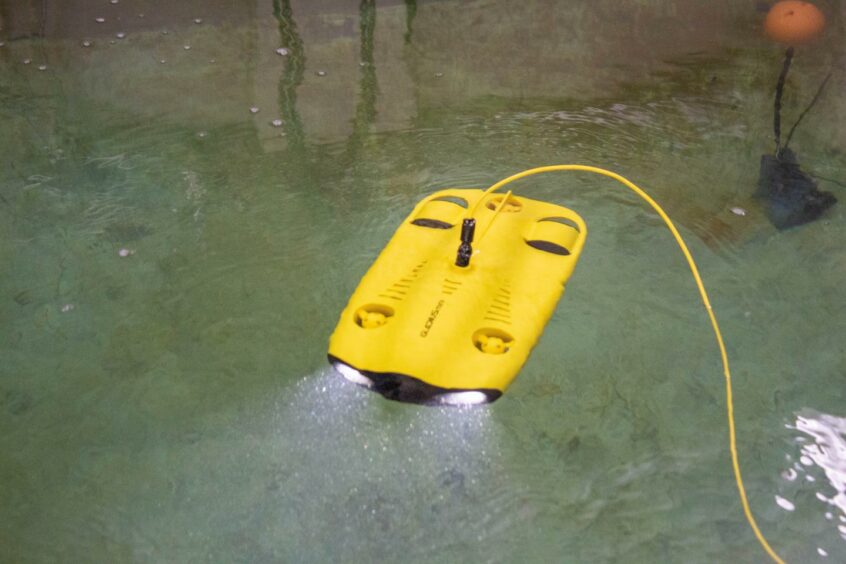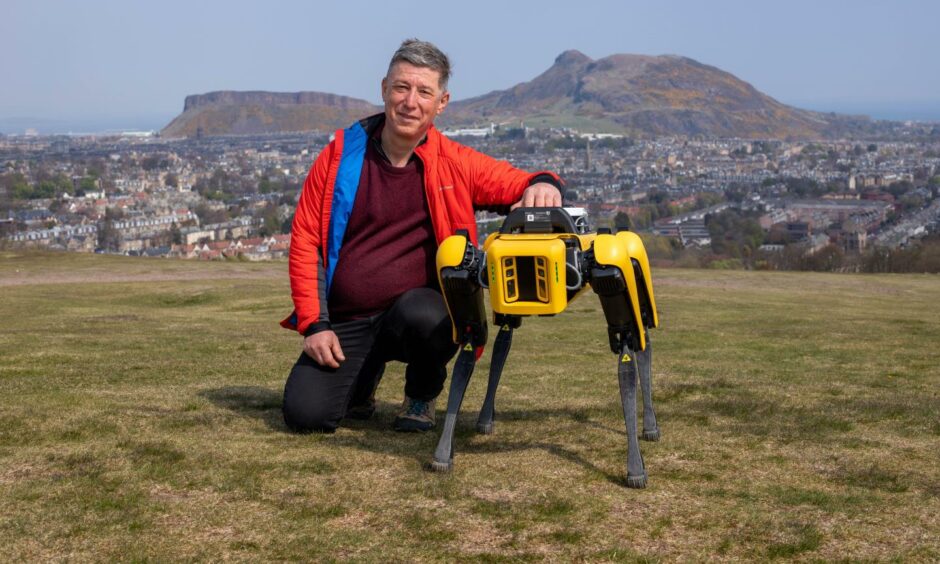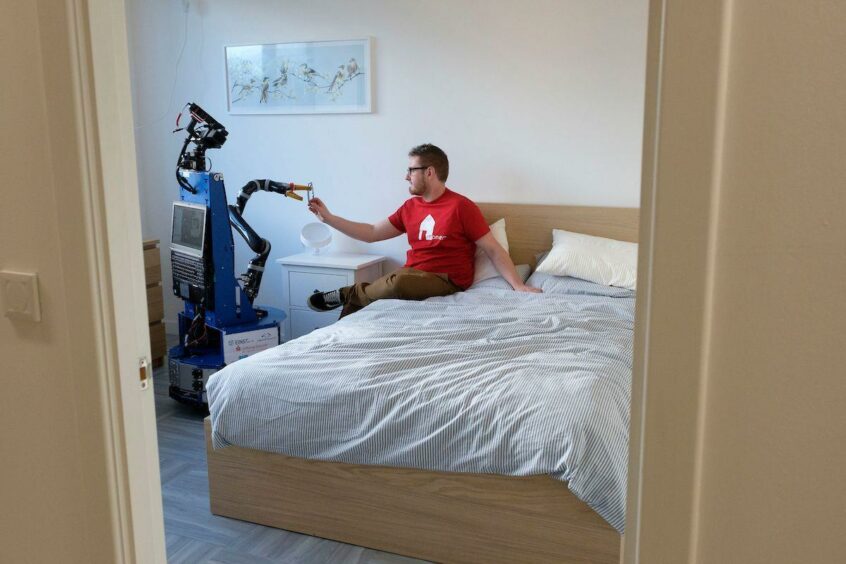Mention the word “robot” and most people’s minds will turn to characters from science fiction, whether it’s Data in Star Trek, Kryten in Red Dwarf, or Johnny 5 in Short Circuit.
Yet robots aren’t simply some fanciful trope used to add an exotic twist to films or television series set in the future – they already walk among us.
Or, more accurately, they already crawl, roll, and fly among us.
Robots are being used throughout the north and north-east in a variety of sectors, from oil and gas to medicine.
But, before you rush to press the panic button, it turns out these machines are more akin to the docile R2-D2 in Star Wars or Disney’s adorable Wall-E than the treacherous T-800 in Terminator or the infamous Ash in Alien.
No need to fear use of robots
“People are very worried in general that robots are going to take over the world and take over their jobs,” said Yvan Petillot, professor of robotics and computer vision at Heriot-Watt University in Edinburgh.
“In practice, they still need a lot of babysitting by humans.”
One of the areas studied by Prof Petillot and his colleagues is the interaction between robots and humans.
“There’s going to be a new industry created around working with robots in close collaboration to understand what they’re doing when they’re autonomous, why they’re doing it, and what they should be doing next,” he explained.
People are very worried in general that robots are going to take over the world and take over their jobs.”
Yvan Petillot, Heriot-Watt University.
“The robot will ask for help and people will respond to that, but they will also be involved in the maintenance and construction of the robot.”
As director of the Offshore Robotics for Certification of Assets (Orca) Hub, Prof Petillot has a front-row seat when it comes to the latest developments in the sector.
Orca is one of four “hubs” financed by UK Research and Innovation (UKRI) – the arm of the UK Government that funds the university research councils and Innovate UK, formerly the Technology Strategy Board.
Robots can reduce risk to humans
All four hubs are investigating how robots can be used in extreme environments.
Orca is working alongside energy giants including BP, Shell, and Total in the North Sea to develop robots that can be used to inspect oil and gas installations as part of their maintenance and repair cycles.
The aim is to reduce the risk to humans, while also cutting the cost of inspection, maintenance and repairs, and lowering the industry’s carbon dioxide emissions.
Underwater robots have been used to not only inspect the oil and gas sector’s subsea installations but also to examine foundations for offshore wind turbines.
“We are now working with Fugro in Aberdeen to develop that further to more commercial products,” Prof Petillot said.
He added: “In the air, we’ve developed solutions with aerial vehicles, and looked at how drones could be used to inspect and repair wind turbine blades, or in the oil and gas industry.”
Orca is also working with the Net Zero Technology Centre in Aberdeen on offshore low touch energy robotics and autonomous systems, a programme funded by the Scottish Government and industry to use robots to help with the North Sea’s transition from oil and gas to hydrogen and renewables.
Back on dry land, Dounreay Site Restoration Limited (DSRL) – the subsidiary of the Nuclear Decommissioning Authority that’s in charge of cleaning up and then demolishing the former nuclear research and development centre in Caithness – is also using robots.
Technology used in decommissioning
DSRL is working with another one of the UKRI-financed hubs – Robotics and Artificial Intelligence in Nuclear, led by Manchester University – to explore how robots can be used to decommission facilities that have been contaminated with radiation.
Robots could be used to survey hard-to-reach spots, such as under-floor drains in Dounreay’s laboratories.
Craig Brown, head of strategic planning and innovation at DSRL, said: “We use advances in technology, equipment and machinery to assist in our decommissioning challenges.
“Typically, such technology is used where it reduces potential harm to our personnel – for example, working at heights, in confined spaces, or for distancing from additional hazards.
“We have successfully used remotely-operated vehicles – operated by our personnel – for inspections within underfloor ducts and pipework, overhead building surveys and in the carrying out of demolition work.”
Remotely-operated tools that reach down 26ft into the reactor are being used to cut fuel elements free in the mammoth decommissioning project.
Robots to carry out surgery?
Looking further ahead, robots could also be used to improve access to healthcare in remote parts of the Highlands and Islands.
Prof Petillot is also one of the two academic leaders at the National Robotarium, a centre that will open in Edinburgh later this year.
His colleagues there are developing robots that can be used in telemedicine – healthcare delivered from a distance.
Examples include robots checking patients’ vital signs – such as pulse, blood oxygenation level and number of breaths per minute – and controlled by doctors, nurses or other medics from far away, allowing patients to stay in their own homes or in care homes, rather than having to travel to a clinic.
Prof Petillot said: “The advances in robotic code that we’re making mean that, very shortly, we could have a van with a robot inside that could go to islands or other remote places and carry out simple operations, such as knee surgery.
“As long as there’s good connectivity, probably fifth-generation (5G) mobile phone signals or perhaps satellite communications, if the cost is affordable, the surgeon would be based in a hospital somewhere else and have access remotely to the robot and to the patient very efficiently.
The advances in robotic code that we’re making mean that, very shortly, we could have a van with a robot inside that could go to islands or other remote places and carry out simple operations, such as knee surgery.”
“That’s one of the targets we have in maybe the next five to 10 years.
“We think that is now feasible, thanks to the technology we have developed in the past 10 years.”

